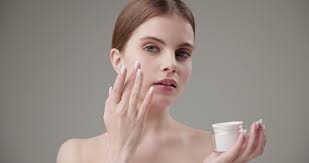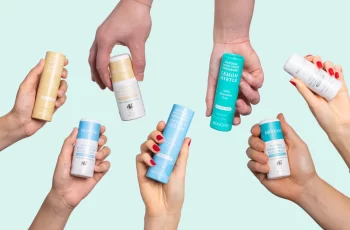How to use Azelaic Acid for Rosacea?
When you have a concern for the skin such as rosacea it’s only natural for you to wary of using any old ingredient in your daily skincare routine. The beauty of azelaic acid is the fact it contains anti-inflammatory properties meaning it can reduce redness and soothe the skin. With the ability to reach the lower layers and preventing any future flare-ups of redness and other levels of rosacea severity. With this in mind lets investigate how to use azelaic acid for rosacea.
How long does azelaic acid take to work on rosacea?
Before we get stuck into how long it takes for azelaic acid to work on rosacea, let me first describe what azelaic acid is and how it benefits the skin.
Azelaic Acid
The chemical name for azelaic acid is dicarboxylic acid and is a natural extract from barley, wheat, and rye. With modern day technology obtaining an effective and stabile level of this powerful, but gentle acid has become the norm, and you can expect to find more and more of this clever ingredient make its way into the various skincare formulas.
Most mistaken as a member of the Alpha Hydroxy Acid, azelaic acid provides the same exfoliating and clarifying benefits of its fellow acids yet remains gentle on the skin whilst acting like a potent antioxidant. Often found in concentrates between 15% and 20% with even lower percentages known for having impressive results on the skin. Having said that if you find you suffer from skin conditions such as rosacea finding the right formulation is vital to ensure there are no signs of irritation or sensitivity caused.
Main Benefits of Azelaic Acid
Combats breakouts, including spots, blackheads, and frequent acne flare-ups
Reduces the appearance and severity of rosacea
Exfoliants the build-up of dead skin cells revealing a brightened complexion
Diminishes the sign of dark spots and hyperpigmentation
Can azelaic acid make rosacea worse?
Rich in antioxidant and anti-inflammatory properties azelaic acid has gained a reputation at reducing signs of redness and irritation by working its way deeply into the lower layers of the skin and aiding longer lasting results. Much like all acids, specifically chemical exfoliants, you must first find the right formula due to the fact concentrates of azelaic acid of 10% or less tend to be difficult to find, leading to many products containing higher percentages can have an effective on the consistency of the formula with it becoming very grainy. This can cause a problem for those with rosacea as the physical disruption on the skin can lead to more severe flare-ups of redness and flaky areas on the face.
When should azelaic acid be used in routine?
There are many products that contain azelaic acid all of which provide the same impressive results. You can find products such as serums and moisturisers whichever formula you decide to try it is important to know how it’ll work for you and your skin type.
Whether it is an over the counter or prescription it is best to apply a thin layer on the surface if the skin, especially if it is a new ingredient you are adding to your routine. Once your skin has built a tolerance to azelaic acid you can use it morning and evening with peace of mind you won’t have long lasting reactions. Having said that, it is always best to consult with a doctor or dermatologist before trying a new skincare product to avoid any unwanted reactions. Once you have established azelaic acid will work perfectly into your routine you can optimise the results by applying your serum or cream-based products after using an exfoliating toner containing an AHA or BHA, such as glycolic acid or salicylic acid. By doing this you are removing the barrier caused by the layer of dead skin cells allowing the azelaic acid to reach further down into the skin. Don’t forget to follow this with a hydrating moisturiser, something enriched in hyaluronic acid and SPF of 30 and above.
What should you not mix with azelaic acid?
Since azelaic acid is one of the gentler facial acids, there are more ingredients you can team with it. This is, however, doesn’t mean you are safe to use it with anything, below is a list of ingredients you should take caution when teaming them together with azelaic acid.
Azelaic Acid and Salicylic Acid (BHA)
When teaming these ingredients together without a worry of causing irritation to the skin, you should apply products that complement each other. For example, if you are wanting to use a serum enriched in azelaic acid, then opt for a toner containing the BHA, salicylic acid. This will not only help azelaic acid penetrate the skin, but due you will also leave enough time in between to avoid any sensitivity caused. Bearing in mind of course, that if you have a dry or sensitive skin type prone to rosacea and similar flare-ups, its best to avoid using salicylic acid in your daily routine all together.
Azelaic Acid and Vitamin C
With both ingredients having an outdated reputation of becoming unstable in formulations. You may naturally think that both are not suitable to work together, but when introduced to your routine the right way, you’ll truly reap the rewards to these skincare powerhouses. If I was to suggest, it would be to first apply your vitamin C serum in the morning, followed by azelaic acid moisturiser in the evening.
Azelaic Acid and Hyaluronic Acid
Lucky for us hyaluronic acid can be teamed with every skincare ingredient with no concern of irritation. This duo would in fact, be the most beneficial if you experience frequent flare-ups in rosacea. The hydration given to the skin by hyaluronic acid will help soothe the outer surface and enable azelaic acid to work its magic with the peace of mind there will be limited if any side effects, but instead a healthy, balanced, and luminous finish to the skin.
Can you use azelaic acid every day?
You can indeed! In fact, you can use it twice a day in your daily routine in the morning and evening. If you are wanting to know in a little more detail about azelaic acid and how it benefits the skin, check out our dedicated blog post about this clever ingredient and how it works for your complexion, especially if you suffer with rosacea.
There you have a little more information about how to use azelaic acid for rosacea. As I have already mentioned it is vital for, you’re the health of your skin to ensure you consult with a doctor or dermatologist. Once you have a better understanding of how this ingredient benefits the skin, you’ll be amazed with how your complexion improves.
Don’t forget, if skin is your thing, come and check out our new YouTube channel, The Green Sofa. We’ll save you a seat, and any other questions come and follow us on Instagram.
DQH Knowledge drop: In your 20s, your skin cell turnover decreases. (Cell turnover is a key component in keeping your skin youthful.) You know what else slows down? Your collagen production. Starting in your 20s, collagen decreases by about 1 percent per year. Should you want to prevent fine lines and wrinkles, start by eliminating behaviors that contribute to premature aging. “If it’s bad for you, it’s bad for your skin,” says dermatologist Michel Somenek.
“Cigarette smoking reduces blood flow to the skin and causes premature wrinkling and a dull skin texture. Making the repeated pursed motion to inhale can also cause smoker’s lines. Alcohol and recreational drugs are toxins for the skin that damage its cellular structure and DNA,” Somenek tells us. “The faster you eliminate vices while you are young, the better chance your skin and body have to recuperate.” Also, adopting an anti-aging routine in your 20s is key. After all, the best offense is a good defense. We spoke to Somenek and experts Joshua Ross and Audrey Kunin to find out more.
Keep reading for the best anti-aging products for your 20s, according to skincare professionals.
Sunscreen
“We all know that the sun is the number one cause of skin aging and starting the prevention in your 20s is very important,” Ross says. “The majority of your sun damage won’t start to appear until you’re in your 30s, so don’t wait until you see it surface or you’ll be behind the curve. Stay ahead of it with a good-quality zinc-based sunscreen worn daily.”
Farmacy Green Defense Daily Mineral Sunscreen
An invisible sunscreen with SPF 30, plus botanical extracts meant to protect skin with tons of antioxidants. Bonus: It’s clean and fine to use under makeup.
Bareminerals Complexion Rescue™ Tinted Moisturizer Broad Spectrum SPF 30
Although we recommend you use your SPF and moisturizer separately, we also understand moments when you don’t have time or energy for that extra step. For those times, this bareMinerals moisturizer is a great thing to have on hand.
Vitamin C Serum
“A great introduction to anti-aging is to start with a vitamin C serum in your morning skincare routine,” Ross says. “It’s a powerful antioxidant that will neutralize free radicals and brighten the skin.” He adds that it’s a great way to counteract the effects of the sun’s harmful rays, which, as previously mentioned, are among the biggest causes of premature aging.
Drunk Elephant C-Firma™ Vitamin C Day Serum
The Drunk Elephant C-Firma is a lightweight serum that promises to give skin a glow by combining the brightening powers of vitamin C with ferulic acid, l-ascorbic acid, and vitamin E. The included sodium hyaluronate is meant to replace hydration loss, so you shouldn’t have to deal with any irritation.
Sunday Riley C.E.O. Rapid Flash Brightening Serum
This potent serum is jam-packed with vitamin C (15 percent, to be exact), which means it’s a potential superstar at both brightening skin and dousing it in antioxidants.
Peptides
Using peptides on your skin has many benefits, says Somenek. “The skin barrier is what defends the body against pollution, UV rays, bacteria, and toxins. It can be damaged by several everyday factors. Using topical peptides aids in building a stronger barrier,” he says. “Peptides comprise elastic fibers, which are a type of protein. These fibers help to make skin appear taut and firm. Peptides can also help repair damaged skin, relieve inflammation, and even out skin tone. Some peptides can kill acne-causing bacteria that is common in 20-somethings.”
Kunin agrees, saying, “Peptides are an excellent entry point for supporting collagen.” She recommends looking for face and eye treatments that contain these collagen-boosting powerhouses.
Charlotte Tilbury Magic Eye Rescue Cream
This Charlotte Tilbury super-emollient eye cream has a base of coconut oil and shea butter (read: it’s incredibly hydrating). Botanicals plus peptides are meant to help reduce dark circles and boost collagen, respectively.
This creamy moisturizer serves up potent collagen-boosting peptides and pycnogenol, and antioxidant-rich vitamin C. “Instead of sitting on top of the skin, peptides penetrate the outer layer so they go deep. The ‘signals’ they send tell the cells to produce elastin and collagen, which are needed for youthful-looking skin,” explains Somenek.
At-Home Peel Pads
Remember that skin cell turnover fiasco we talked about earlier? One way to help support it is by exfoliating. “Exfoliation is important to help keep skin fresh and luminous,” Kunin says. She recommends using at-home peel pads as an easy and effective way to exfoliate.
“The goal in your 20s is to fight the slowing pace of cell turnover. It is wise to use products that gently exfoliate, yet still remove oil and other impurities. Products that have Alpha Hydroxy Acids (AHA) or Beta Hydroxy Acids (BHA) are a good choice.”
According to Somenek, you should only exfoliate two to three times a week. “People of all ages are guilty of over-exfoliating and that can be too much of a good thing,” he says.
Dermadoctor Kakadu C Intensive Vitamin C Peel Pad
A few swipes of this Derma Doctor powerful peel pad promise to leave your skin glowing and smooth, thanks to the seven (yes, seven) types of chemical exfoliants, including AHA and BHA. It also contains vitamin C via Kakadu plum extract for added brightening and antioxidant protection.
KEY INGREDIENTS Kakadu plum extract is sourced from the Kakadu plum, a fruit grown in northern Australia. It contains vitamin C, which restores the skin’s natural barrier, increases collagen production, and soothes irritation.
Dr. Dennis Gross Skincare Alpha Beta® Universal Daily Peel Pads
These are the gold standard of peel pads, with a cult following and over 900 five-star reviews on Sephora. They’re easy to use and contain a blend of anti-aging exfoliating acids.
Emollient Night Cream
“In your 20s, you need to start upping the hydration in your skincare routine. You may have been cautious of over-moisturizing because of acne in your teens, but as you enter your 20s, your skin transitions and becomes drier,” Ross says. “I recommend an emollient night cream added into your evening skincare regimen.”
“Twenty-somethings need to make sure that they are not using creams that will clog their pores and cause excess oil production,” says Somenek. Opt for non-comedogenic products.
Cerave Skin Renewing Night Cream
One great choice is the CeraVe Skin Renewing Night Cream, which is a non-comedogenic night cream that leaves skin soft and glowy. It combines the moisturizing powers of ceramides and hyaluronic acid.
RoC Retinol Correxion Max Hydration Creme
“The best night cream ingredients contain retinol, benzoyl peroxide, and/or salicylic acid or hyaluronic acid. The goal is to moisturize, yet remove excess oil,” says Somenek. This Roc Retinol Correxion cream fits the bill as it contains both hyaluronic acid and retinol so it promises to moisturize while also being non-comedogenic.



